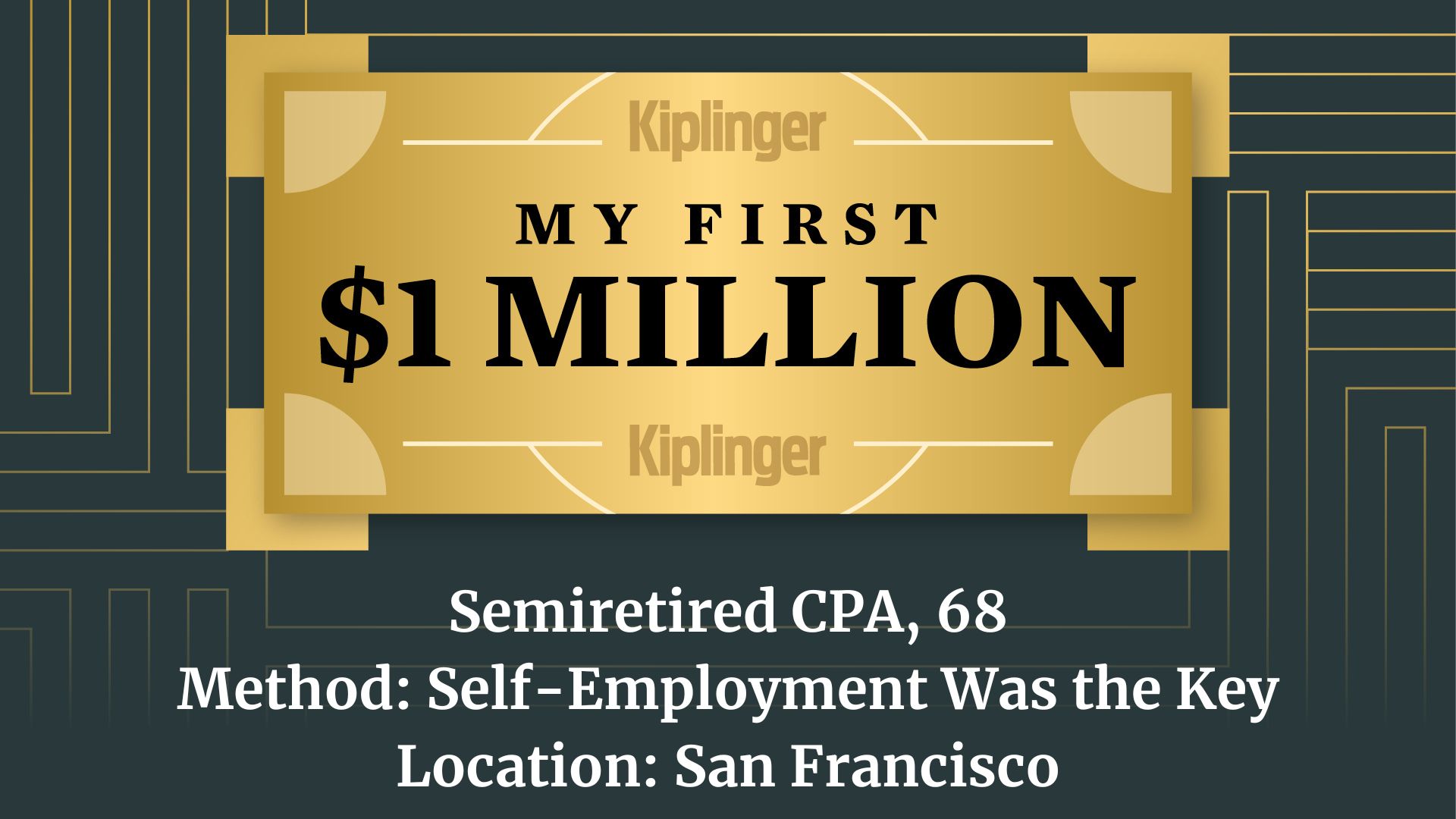Dangers in Unlisted Real Estate Trusts
The marketing of non-traded REITs as a stable investment for seniors is drawing scrutiny from regulators.

EDITOR'S NOTE: This article, originally published in the June 2011 issue of Kiplinger's Retirement Report, has been updated.To subscribe, click here.
It sounds like the ideal investment for a retiree: a portfolio with a nice 6% or 7% yield and a stable share price that won't bounce around with the market's ups and downs.
That's the sales pitch for "non-traded real estate investment trusts," which are often marketed to older investors seeking steady income. But many people who bought into these vehicles in recent years have seen their dividends drop, their share values erode and their ability to sell the shares sharply curtailed.
From just $107.88 $24.99 for Kiplinger Personal Finance
Become a smarter, better informed investor. Subscribe from just $107.88 $24.99, plus get up to 4 Special Issues

Sign up for Kiplinger’s Free Newsletters
Profit and prosper with the best of expert advice on investing, taxes, retirement, personal finance and more - straight to your e-mail.
Profit and prosper with the best of expert advice - straight to your e-mail.
Like their better-known publicly traded cousins, non-traded REITs tend to hold broad portfolios of office buildings, retail properties and other real estate. They also pay out most of their taxable income to shareholders in the form of dividends. But unlike publicly traded REITs, non-traded REITs are not listed on any national exchange. Investors buy the shares through brokers, typically at a $10 offering price.
Amid choppy markets and rock-bottom interest rates, unlisted REITs' promises of stability and steady income have helped them rake in cash from investors. The products attracted $8.3 billion last year, up 28% from 2009, and total assets reached roughly $72 billion, according to Blue Vault Partners, a Cumming, Ga.-based research firm that tracks non-traded REITs. A record 15 new unlisted REITs launched last year, bringing the total to 61 at the end of 2010.
That growth has come despite heightened scrutiny from regulators, who are concerned about how these products are marketed to investors. The Financial Industry Regulatory Authority, which oversees the brokerage industry, in 2009 requested information from about a dozen brokerage firms on broker commissions, disclosure of risks to investors and other details. Since then, it has begun several formal investigations into sales practices.
On May 31, FINRA announced that it had filed a complaint against David Lerner & Associates, saying the Syosset, N.Y.-based investment firm sold shares of a non-traded REIT without determining whether it was suitable for investors and provided misleading information about the investment, Apple REIT Ten.
In a statement on its Web site, David Lerner said it "vehemently denies FINRA's allegations," adding that it "conducted thorough due diligence of Apple REIT Ten's offering documents and audited financial statements." All disclosures "were materially accurate and complied with regulatory requirements," the firm said.
Understanding the inner workings of unlisted REITs can help investors avoid potential pitfalls in investments that purport to offer a lot of income without a lot of risk. Here are factors to consider.
The price tag. When an investor puts $10 into an unlisted REIT, he or she is often getting only about $9 of real estate investments. Commissions and other upfront costs can immediately consume roughly 10% of the investment. The investments can also carry ongoing management fees and expenses.
Michael Black, a broker in Scottsdale, Ariz., says he generally gets a 6% or 7% commission when selling clients non-traded REITs. He acknowledges that the real estate investments must deliver "quite a return" to overcome the fee hurdles. To find REITs that are more likely to clear those hurdles, Black says, he's focusing on those that buy distressed properties.
The health of the dividends. On the surface, there's nothing not to like about non-traded REIT dividends. The average unlisted REIT yielded 6.5% at the end of last year, versus about 4% for publicly traded REITs, according to Blue Vault.
But recent market distress has caused some unlisted REITs to slash payouts. Behringer Harvard Opportunity REIT I, for example, paid distributions of ten cents per share last year, down from 23 cents in 2009. The reduction "was prudent during a time of debt market distress when capital conservation was an important part of our program to preserve shareholder value," Behringer Harvard said in a statement.
Meanwhile, other REITs are paying out more cash in dividends than they're actually earning from their real estate operations -- a formula for future dividend cuts and other woes. The median unlisted REIT that was open to investment in 2010 paid out distributions that were substantially higher than its income from operations, according to Blue Vault.
In some cases, instead of putting investors' money into income-producing properties, the REITs are handing some of that cash right back to shareholders in the form of a dividend. That can happen when REITs that are still building their portfolios set distribution rates based on estimates of the future income of their investments. But critics charge that REITs set payouts at unsustainably high levels in order to lure in investors.
The share price. Unlisted REITs can maintain their initial offering price for years as they raise money from risk-averse investors and ramp up operations. But within 18 months after the end of the offering period, securities-industry rules require that the REITs be repriced based on an appraisal of their assets and operations. That's when market realities start to set in.
Inland American Real Estate Trust, for example, was first sold to investors in 2005 at $10 per share, and it kept that price until September of last year. Then the estimated share value suddenly dropped about 20%, to $8.03. The valuation was "a direct reflection of economic conditions in the real estate market due to the recession," says Dan Lombardo, senior investor relations manager at the Inland unit that conducts the REIT's day-to-day operations.
In other cases, non-traded REITs stick with artificially stable share prices, according to regulators. In its complaint against David Lerner, FINRA said that several earlier REITs in the Apple series had for years maintained a constant share price of $11, despite significant market fluctuations and declining net income. What's more, the REITs paid outsized distributions funded in part by returning investors' capital and borrowing money, FINRA charged.
A spokeswoman for Apple REIT Companies declined to comment on the charges, saying in an e-mail that information on the REITs "is available within our numerous filings with the Securities and Exchange Commission."
The fact that unlisted REIT shares aren't subject to daily market moves is a drawback for investors, says Christopher Germain, president of real estate investment advisory firm Piping Rock Partners. While a falling share price can warn investors of trouble in publicly traded stocks, he says, by the time unlisted REIT shares are revalued, "it's too late for investors to do anything."
Liquidity. Since unlisted REITs don't trade on national exchanges, selling the shares can be difficult and costly. Limited share repurchase programs tend to disappear when the going gets tough, as it has in recent years. Investors should be prepared to hold an unlisted REIT for seven to ten years, industry experts say.
Difficulty selling shares can combine with declining share values and distributions to form a triple whammy for unlisted REIT investors. That's what happened to Ted Horita, an 81-year-old retiree in Los Angeles, according to an ongoing FINRA arbitration claim he filed this year against Ameriprise Financial Services.
On the advice of his Ameriprise broker, Horita in May 2007 invested $353,000 in Inland American, according to the claim. In March 2009, Inland American suspended its share repurchase program. That same year, the REIT paid distributions of only about 50 cents per share, down from 62 cents in 2008. In 2010, the estimated share value declined by 20%.
Horita claims that his broker didn't adequately disclose the risks of the REIT, instead presenting it as a solid, risk-free investment. He's seeking to recover his original investment. "It's an absolutely misleading pitch to recommend these investments for clients who are older," says Andrew Stoltmann, Horita's Chicago-based lawyer. Ameriprise didn't respond to requests for comment.
Profit and prosper with the best of Kiplinger's advice on investing, taxes, retirement, personal finance and much more. Delivered daily. Enter your email in the box and click Sign Me Up.

-
 10 Cheapest Places to Live in Washington
10 Cheapest Places to Live in WashingtonProperty Tax Is Washington your go-to ski destination? These counties combine no income tax with the lowest property tax bills in the state.
-
 Healthy to 100: Secrets from Countries Where Retirees Age Best
Healthy to 100: Secrets from Countries Where Retirees Age BestLongevity is a team sport, according to author Ken Stern. Here's the secret sauce for living long, healthy lives from countries like Italy and Japan.
-
 My First $1 Million: Semiretired CPA, 68, San Francisco
My First $1 Million: Semiretired CPA, 68, San FranciscoEver wonder how someone who's made a million dollars or more did it? Kiplinger's My First $1 Million series uncovers the answers.
-
 457 Plan Contribution Limits for 2026
457 Plan Contribution Limits for 2026Retirement plans There are higher 457 plan contribution limits in 2026. That's good news for state and local government employees.
-
 Medicare Basics: 12 Things You Need to Know
Medicare Basics: 12 Things You Need to KnowMedicare There's Medicare Part A, Part B, Part D, Medigap plans, Medicare Advantage plans and so on. We sort out the confusion about signing up for Medicare — and much more.
-
 The Seven Worst Assets to Leave Your Kids or Grandkids
The Seven Worst Assets to Leave Your Kids or Grandkidsinheritance Leaving these assets to your loved ones may be more trouble than it’s worth. Here's how to avoid adding to their grief after you're gone.
-
 SEP IRA Contribution Limits for 2026
SEP IRA Contribution Limits for 2026SEP IRA A good option for small business owners, SEP IRAs allow individual annual contributions of as much as $70,000 in 2025, and up to $72,000 in 2026.
-
 Roth IRA Contribution Limits for 2026
Roth IRA Contribution Limits for 2026Roth IRAs Roth IRAs allow you to save for retirement with after-tax dollars while you're working, and then withdraw those contributions and earnings tax-free when you retire. Here's a look at 2026 limits and income-based phaseouts.
-
 SIMPLE IRA Contribution Limits for 2026
SIMPLE IRA Contribution Limits for 2026simple IRA For 2026, the SIMPLE IRA contribution limit rises to $17,000, with a $4,000 catch-up for those 50 and over, totaling $21,000.
-
 457 Contribution Limits for 2024
457 Contribution Limits for 2024retirement plans State and local government workers can contribute more to their 457 plans in 2024 than in 2023.
-
 Roth 401(k) Contribution Limits for 2026
Roth 401(k) Contribution Limits for 2026retirement plans The Roth 401(k) contribution limit for 2026 has increased, and workers who are 50 and older can save even more.